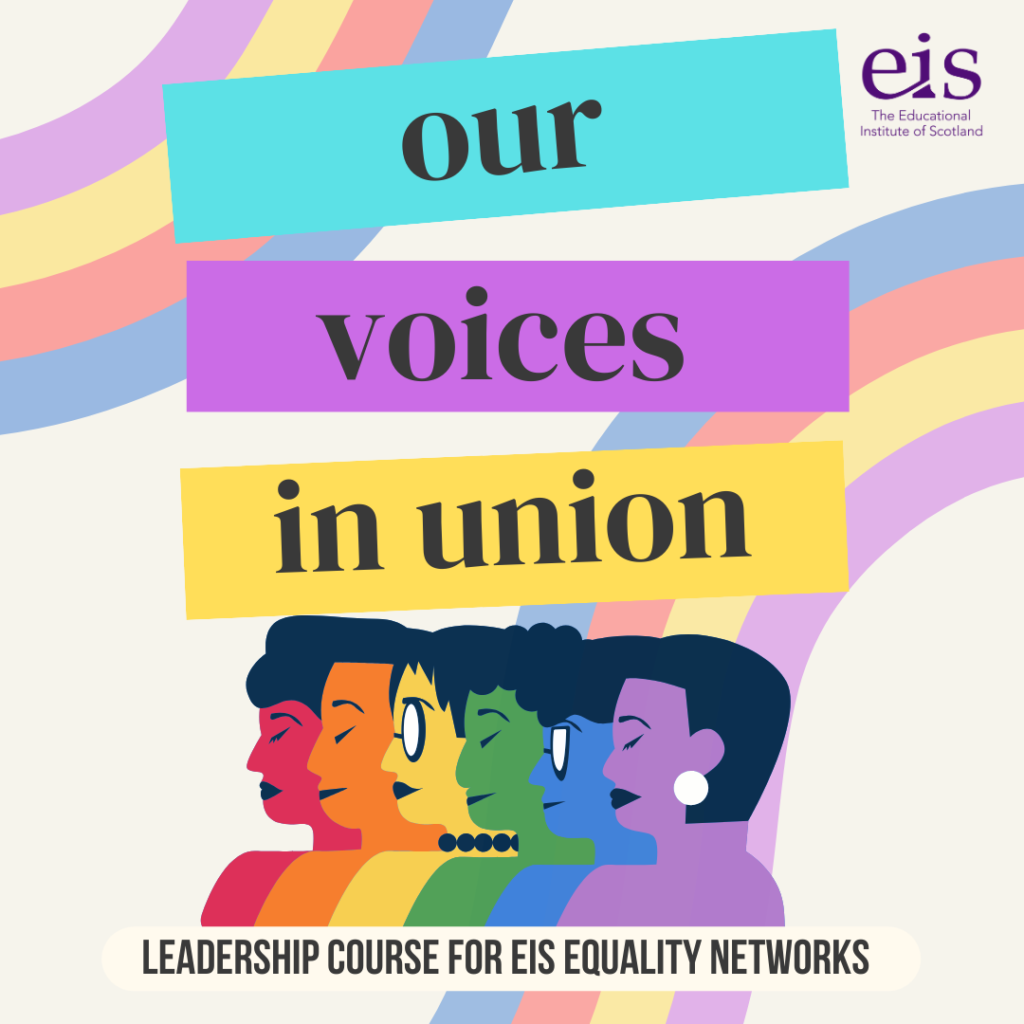
About this topic
The EIS has played an essential role in the planning and implementation of LGBT education in Scotland. The EIS affiliated with the TIE campaign in 2017 and EIS members have been involved with leading the work on designing resources and curricular plans for LGBT+ inclusive education.
The EIS has a LGBT informal network, and LGBT sub-committee, which feeds directly into the work of the EIS Equality Committee, and advises on LGBT issues. In 2023, EIS published “The Power of LGBT inclusive Education”, with advice on how members can take this forward.
The expert video for this topic is provided by Co-Founder and Director of Time for Inclusive Education, Jordan Daly.
Reflective questions:
What avenues currently exist that you are aware of, for reporting a homophobic, biphobic or transphobic incidents at school?
Are you familiar with what would happen next? Do you think members in your local area, are familiar with these processes?
Learning points:
Education is an important sphere in which societal norms are enmeshed within the consciousness of young people and adult learners. There can be no doubt about the harmful effects that the deliberate exclusion and silencing of LGBT existence has had on both generations in school and teaching during this time, and what lingering effects remains in our education system today, also in relation to teachers’ fears of parental complaints related to this topic. Still today in Scotland, LGBT rights activists and spokespeople face harassment, exclusion and targeted attacks. TIE offers support to anyone who experience online abuse in relation to LGBT inclusion.
LGBT organisations and activists have warned that homophobic, biphobic and transphobic attacks are on the rise. The disinformation and toxicity surround the Gender Recognition Act reform (which aims to make the process of obtaining legal recognition of a trans person’s gender, less intrusive), also plays a part in this. A link to EIS’ advice for members on trans inclusion in schools, can be found within in the further information, below, alongside links to handy visuals that provide useful counter narratives to misinformation. At a time when members may be worried by what they read in the media in relation to trans inclusion, there is a greater need for sharing accurate information.
Unfortunately, the spread of misinformation risks backstepping on progress made towards equality for LGBT people, and the consequences can be serious. LGBT Youth Scotland’s Life in Scotland Report in 2018, found that 71% of LGBT young people experienced bullying on the grounds of being LGBT and 35% had experienced a hate crime or incident in the last year. Discrimination and identity-based harassment and bullying has significant mental health impacts. 84% of LGBT young people and 96% of transgender young people indicated they had a mental health problem.
Negative attitudes and stereotypes towards LGBT people are risk factors to both pupils and school staff’s health, safety, and wellbeing. Under the Equality Act (2010), local authorities have a duty to prevent discrimination and to promote good relations between people of different sexualities, as this is a protected characteristic. Schools should take proactive measures to eliminate prejudice and tackle this effectively when it occurs.
A recent TIE survey found that over 70% of parents are aware and supportive of LGBT inclusive education, and this figure improves when those respondents are presented with information about the content of the available teaching resources. This should give teachers confidence that a majority support LGBT Inclusive Education.
View our archived material on Fair-Work within Scotland’s education system